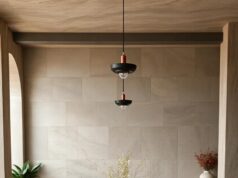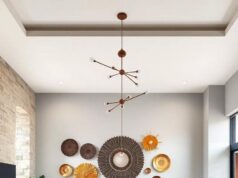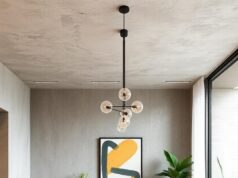When it comes to creating the perfect dining space, every detail matters—including the often-overlooked rug beneath your table. A well-chosen rug can not only bring warmth and texture to your room but also tie together your decor, enhance your dining experience, and even protect your flooring. With so many options available, selecting the right rug can feel overwhelming. Fear not! In this listicle, we’ll share 25 essential tips for choosing the perfect rug to elevate your dining area. From understanding the ideal dimensions to selecting the right materials and colors, you’ll gain insights that will help you navigate the world of rugs with ease. By the time you finish reading, you’ll be equipped with expert advice to transform your dining area into an inviting and stylish haven. Whether you’re a design novice or a seasoned home decorator, these practical tips will guide you in making a thoughtful choice that reflects your personal style and enhances your space. Let’s dive in!
Understand the dimensions: Measure your dining area to determine the right rug size that complements your table and chairs
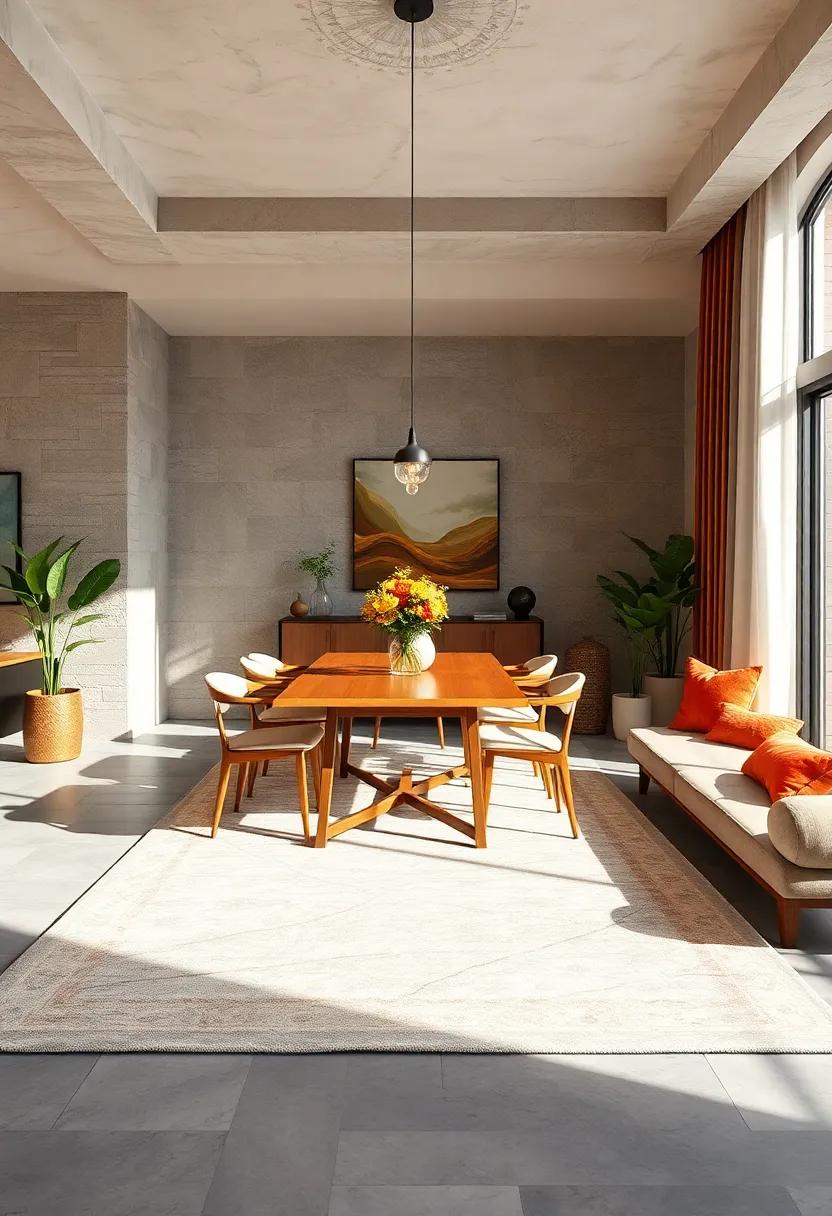
To select the ideal rug for your dining area, begin by taking accurate measurements of the space. Consider the dimensions of your dining table,as well as the chairs that surround it. A general guideline is to ensure that the rug extends at least 24 inches beyond the edges of the table to accommodate chairs being pulled out comfortably. Here are some key aspects to keep in mind:
- Measure your table: Width and length are crucial.Calculate the total area that you want your rug to cover.
- Include chair dimensions: Ensure that when chairs are pushed out, they remain on the rug.
- Account for foot traffic: if your dining area experiences high foot traffic, larger rugs can help absorb sound and maintain visual cohesion.
Next, visualize how the rug will fit in your dining space by sketching a rapid layout. If you have several options in mind, marking out the dimensions using tape on your floor can provide a tangible sense of how different sizes will interact with your furniture. here’s a brief table to help you match your table size with the recommended rug dimensions:
| Table Size | Recommended Rug Size |
|---|---|
| 4-6 Seats (Round or Rectangular) | 5×7 ft or 6×9 ft |
| 6-8 Seats | 8×10 ft or 9×12 ft |
| 8-10 Seats | 9×12 ft or 10×14 ft |
By thoughtfully measuring and visualizing, you can confidently choose a rug that enhances not only the aesthetic of your dining area but also the functionality, creating an inviting atmosphere for every meal.
Choose the right shape: Round, rectangular, or square—select a shape that suits your dining table and enhances the overall aesthetic
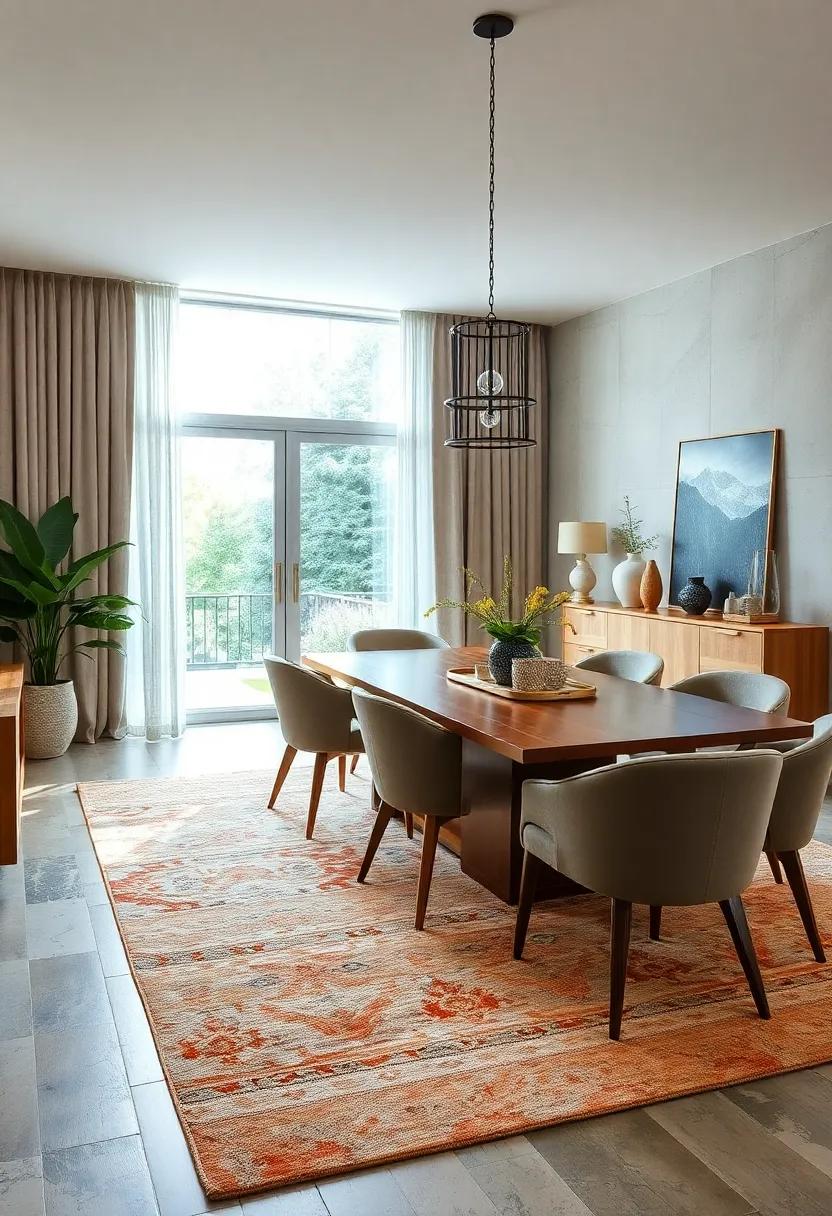
When selecting a rug for your dining area, the shape of the rug should harmonize with the table to create a visually pleasing look.Round rugs are perfect for promoting intimacy, ideal for smaller spaces or circular tables, as they encourage conversation and soften the rigid lines of the surrounding furniture.If you have a rectangular dining table, consider a rug that follows its lines for balance and flow, creating a cohesive look. Square rugs,conversely,can add a unique twist to your design,making them excellent choices for unconventional table arrangements or modern settings.
To ensure that the rug complements both the table and the overall room aesthetic, think about the following:
- Proportions: Ensure that the rug is proportionate to the table size—aim for at least 24 inches of rug beyond the edges of the table.
- style: Match the rug shape and style with the dining area’s theme—rustic, contemporary, or classic.
- Color & Pattern: Choose colors and patterns that either contrast or blend with the table and surrounding decor for a cohesive appearance.
| Shape | Best For | Visual Effect |
|---|---|---|
| Round | Small or Circular Tables | Intimacy and Softness |
| Rectangular | Classic Dining Tables | Balance and Cohesion |
| square | Modern or Unique Arrangements | Contemporary Edge |
Consider the material: Opt for durable fabrics such as wool or synthetic fibers that can withstand spills and foot traffic
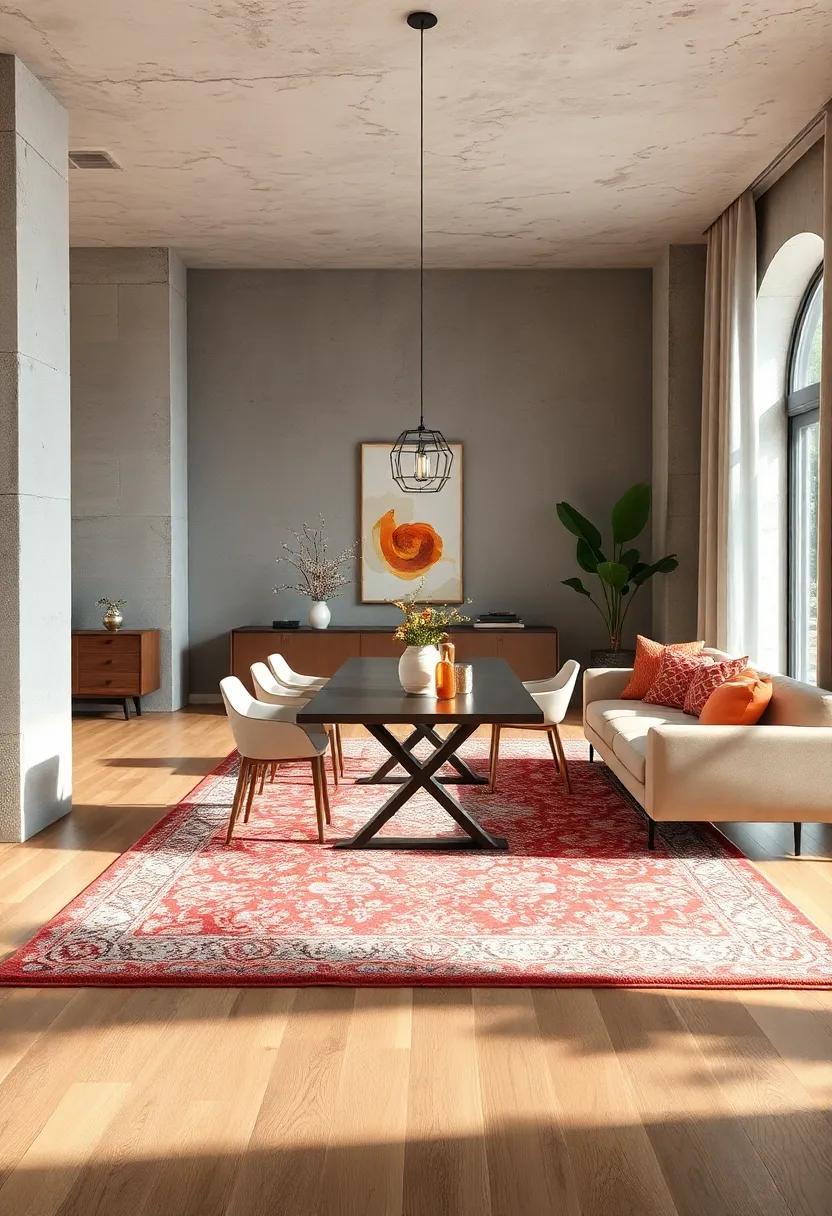
When selecting a rug for your dining area, the material is a critical factor that can considerably impact both aesthetics and functionality. Wool is renowned for its durability and natural stain resistance, making it an excellent choice for spaces that experience high foot traffic. Its ability to absorb moisture and repel stains can protect your rug from spills during mealtimes. Additionally,the natural fibers provide a soft,luxurious feel underfoot,enhancing the overall dining experience.
Alternatively, consider synthentic fibers such as nylon or polypropylene, which are engineered to withstand everyday wear and tear while retaining vibrant colors. These materials are not only resistant to spills but also easy to clean, often requiring just a quick wipe with a damp cloth. Here’s a quick comparison table to help you decide:
| Material | Durability | Stain Resistance | Comfort |
|---|---|---|---|
| Wool | High | Moderate | Soft |
| Synthetic Fibers | Very High | High | varies |
Both options present unique advantages, so it ultimately depends on your specific needs and lifestyle. If your dining area is often a hub of activity, opting for durable yet stylish materials will help you maintain the elegance of your space while ensuring it stands the test of time.
Pay attention to texture: A rug with texture can add depth and warmth, making your dining space inviting and cozy
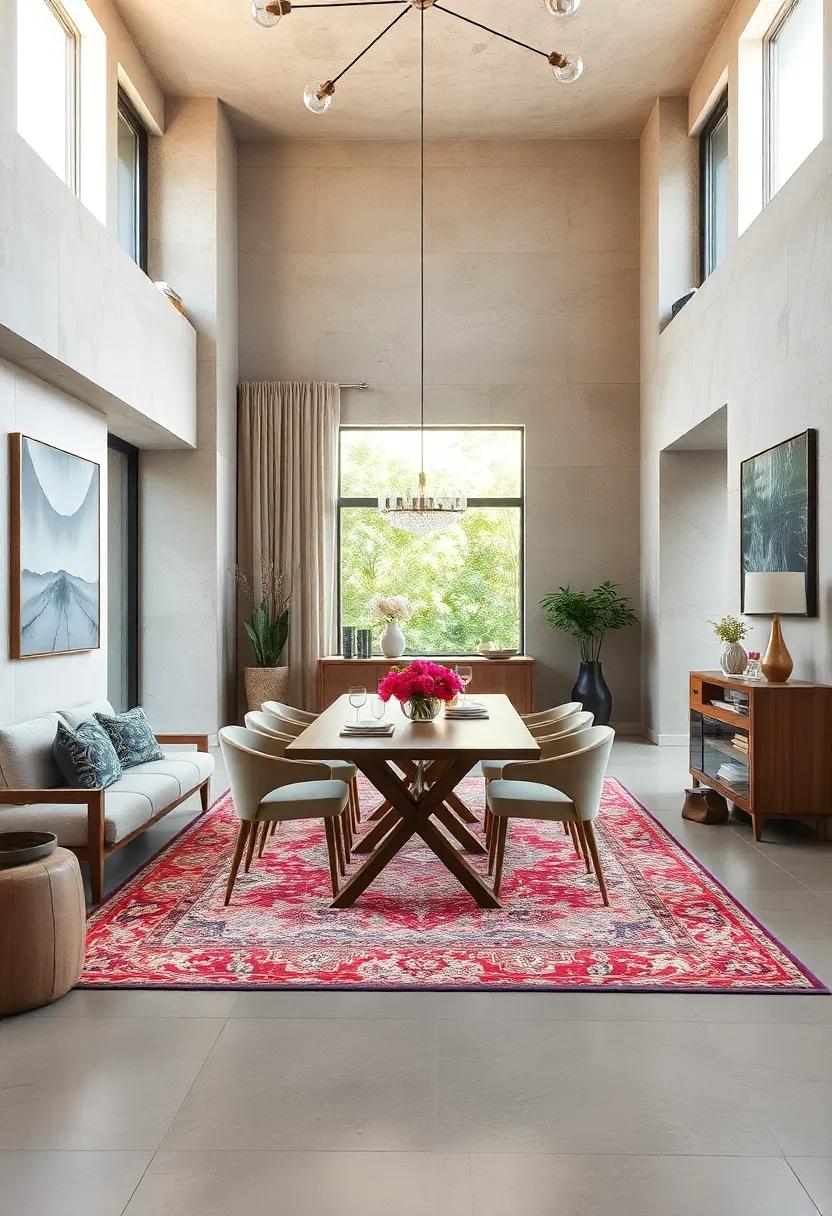
When selecting a rug for your dining area, consider the texture as a primary element that can significantly transform the space. A rug that boasts varied textures—such as a plush shag, a woven jute, or a luxurious velvet—can create a tactile experience that invites guests to linger. To enhance the sense of warmth and comfort, opt for materials that feel good underfoot and provide a soft touch. Here are some textures to consider:
- Wool: Naturally soft and durable, wool rugs add a cozy feel.
- Silk: For a touch of elegance, silk rugs can bring a glamorous sheen.
- Jute: This natural fiber offers an earthy,rustic charm.
- Sisal: A great option for a casual feel, adding organic vibes to your dining space.
In addition to selecting the right material, the weave of the rug also plays a crucial role in its overall effect.A high-pile rug provides a soft,cushy feel,which adds depth to the room. Conversely, a flat-weave rug can offer a more contemporary, streamlined look while still providing some texture. Feel free to mix and match different textures in your dining area to achieve a layered effect that draws the eye and engages the senses.Consider this quick comparison table to explore the benefits of each texture option:
| Texture Type | Feel | Best For |
|---|---|---|
| Wool | Soft & Plush | Warmth & comfort |
| Silk | Smooth & Luxurious | Elegance & Style |
| Jute | Natural & Rough | Rustic & Casual |
| Sisal | Stiff & Durable | High Traffic Areas |
Stick to color harmony: Choose colors that complement your existing décor but also bring a fresh element to the room
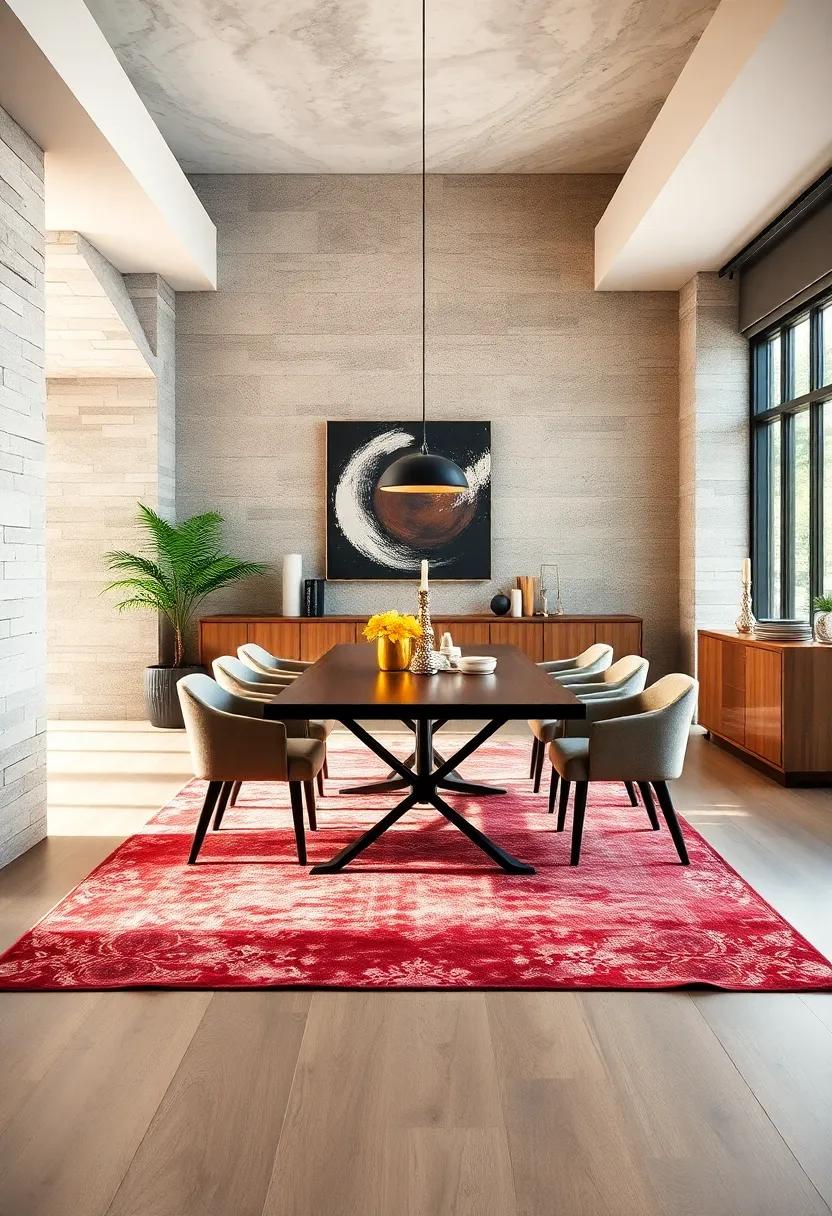
- Understand Your Color Palette: Before selecting a rug, take a moment to analyze your current décor.Look at the dominant colors and their undertones. identify which hues create a harmonious atmosphere and which might clash. A refreshing element could be introduced through subtle highlights or contrasting tones that still resonate with your color scheme.
- Consider Accent colors: Adding a rug in a complementary shade can serve as an accent piece that elevates the existing color palette. If your dining area features warm earth tones, consider a rug with hints of deep teal or mustard yellow to create visual interest without overpowering your space. This balance can bring a lively yet sophisticated touch to your dining experience.
| Color Type | Complementary colors | Fresh Element Options |
|---|---|---|
| Warm Tones | Tans, Browns | Teal, Soft Blue |
| Cool Tones | Greys, Soft Whites | Coral, Warm Yellow |
| Neutral Tones | Beige, Cream | deep Green, Rust |
Think about patterns: Bold patterns can create a focal point, while subtle designs may add interest without overwhelming the space
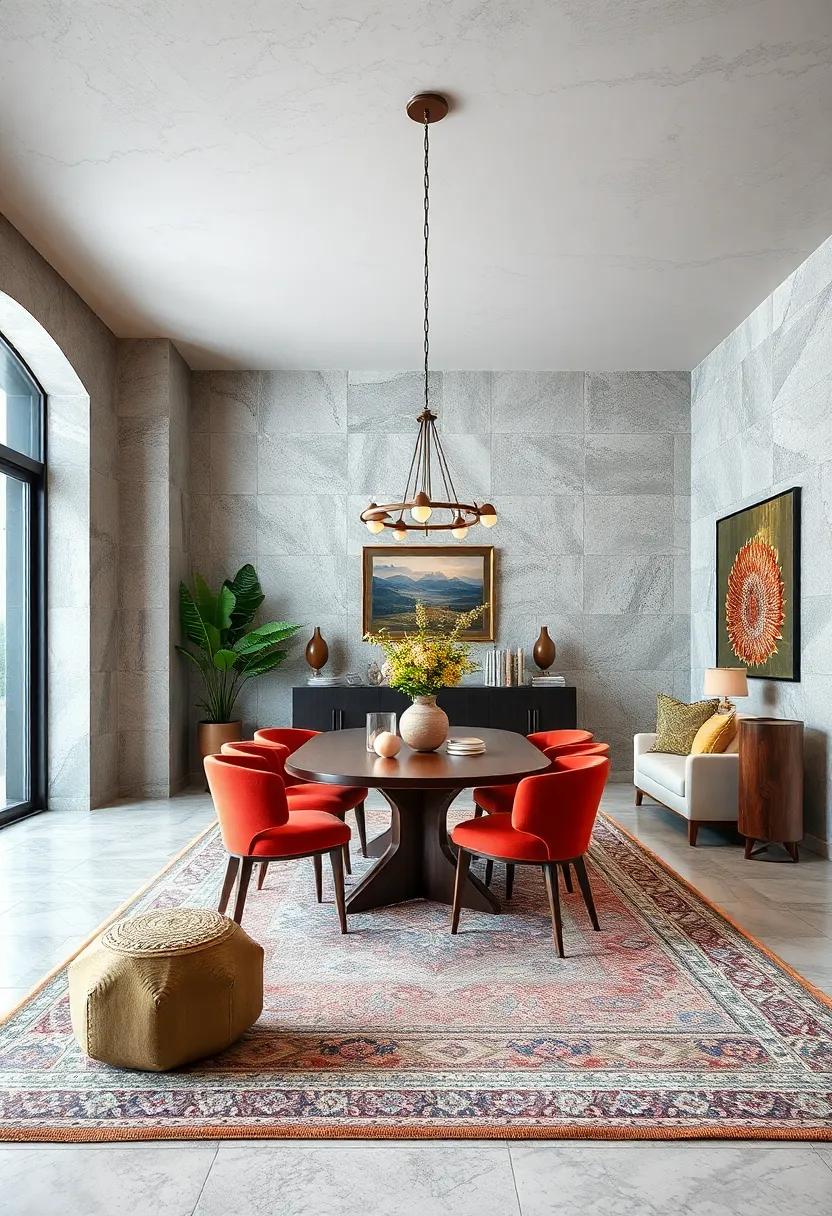
When selecting a rug for your dining area,consider the impact of bold patterns. Rugs with vibrant geometric shapes, floral motifs, or striking colors can serve as a stunning focal point that draws the eye, anchoring the room’s overall design. These statement pieces not only enliven the space but also offer an chance to express your personal style. Consider patterns that complement your existing decor, enhancing the ambiance rather than clashing with it. Some eye-catching options include:
- Geometric Prints: Creates a modern and structured feel.
- Abstract Art: Adds a splash of creativity and intrigue.
- Global Textiles: Infuses cultural richness and eclectic charm.
If bold patterns are not your preference, subtle designs can still elevate your dining area beautifully. Delicate textures and muted tones provide an understated elegance that enriches the space without overwhelming it. These rugs can add depth and interest through nuanced patterns, such as tone-on-tone prints or soft, faded designs. This approach allows for a serene backdrop, making your dining table or centerpiece stand out. Ideal subtle options might include:
- Modern Minimalism: Simple lines or soft color transitions.
- Textured Weaves: Adds tactile interest without bold imagery.
- Pastel Hues: Soft colorways that blend harmoniously.
evaluate your lifestyle: If you have kids or pets,prioritize easy-to-clean and stain-resistant options
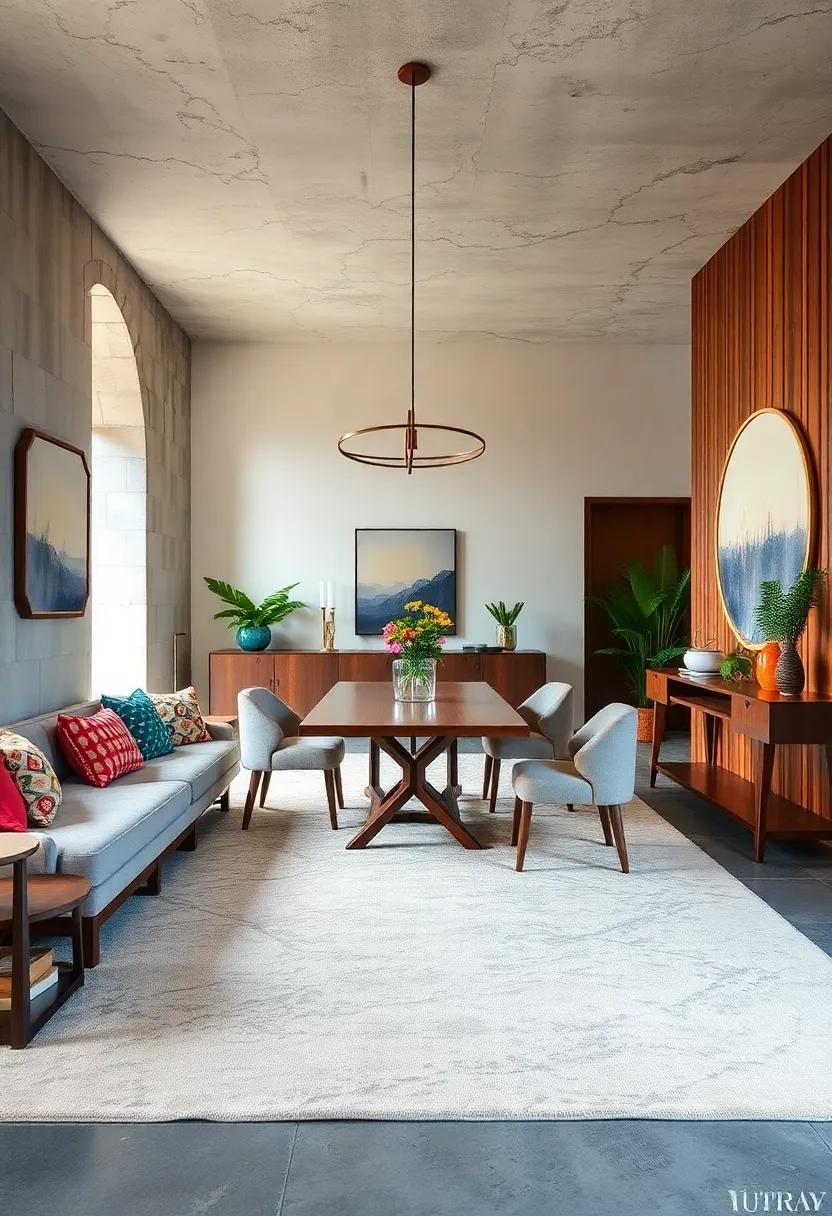
When considering a rug for a household that includes children or pets, practicality should take precedence alongside style. Look for materials that are stain-resistant and easy to clean, such as synthetic fibers like nylon, polyester, or polypropylene. These fabrics can withstand spills and messes, making them ideal for busy families. Opt for rugs with short piles as they are less likely to trap dirt and are simpler to vacuum.Additionally, consider color and pattern – darker shades or textured designs can help conceal stains between cleanings.
It’s also beneficial to explore innovative rug technologies. Some rugs come with specialized treatments that enhance their stain resistance, ensuring that your investment remains vibrant even in the face of daily wear and tear. If you’re interested in both aesthetics and function, here are a few options that blend form with durability:
| Material | Benefits | Cleaning Method |
|---|---|---|
| Polypropylene | Stain-resistant, durable, affordable | Vacuum, spot clean with mild soap |
| nylon | Resilient, fade-resistant, easy maintenance | Vacuum, steam clean |
| Indoor/Outdoor | Weather-resistant, great for high traffic | Hose off, air dry |
Layer your rug: For a boho look, consider layering a smaller rug over a larger one to create a unique visual appeal
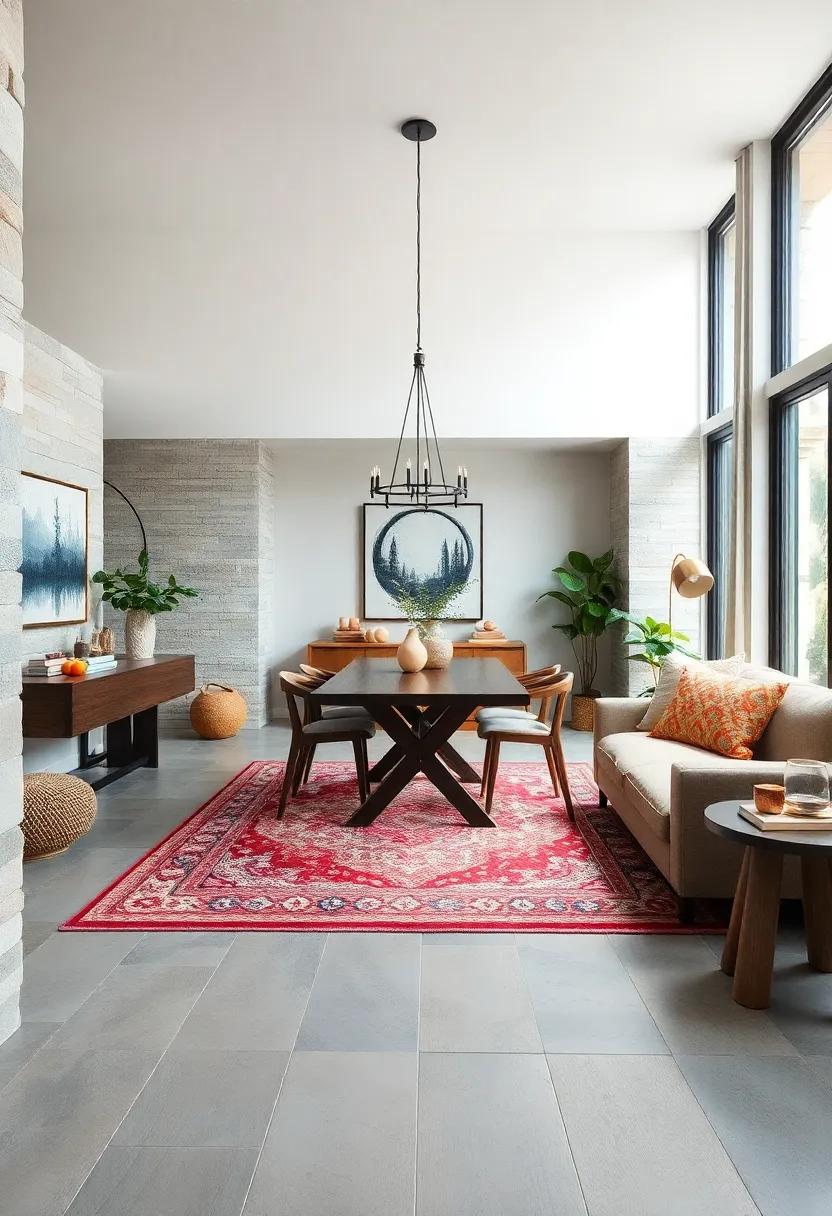
Transforming your dining area into a bohemian haven is all about creating depth and texture, and one of the moast effective ways to achieve this is through rug layering.By placing a smaller, more decorative rug over a larger, more neutral one, you can infuse your space with personality and warmth. This technique not only adds visual interest but also provides a cozy atmosphere for family gatherings and dinner parties.
When selecting rugs for layering, consider the following:
- Contrast in Patterns: Use a bold, patterned rug on top of a solid base to create a striking contrast.
- Color Harmony: Choose rugs that complement each other in colors to ensure a seamless blend.
- Texture Play: Mix different textures, such as a plush, shaggy rug layered over a flat-weave, to add tactile variety.
- size Matters: Ensure the smaller rug is proportionate to the larger one to maintain balance in the space.
Test samples in your space: Before committing,bring home rug samples to see how they look under varying light conditions
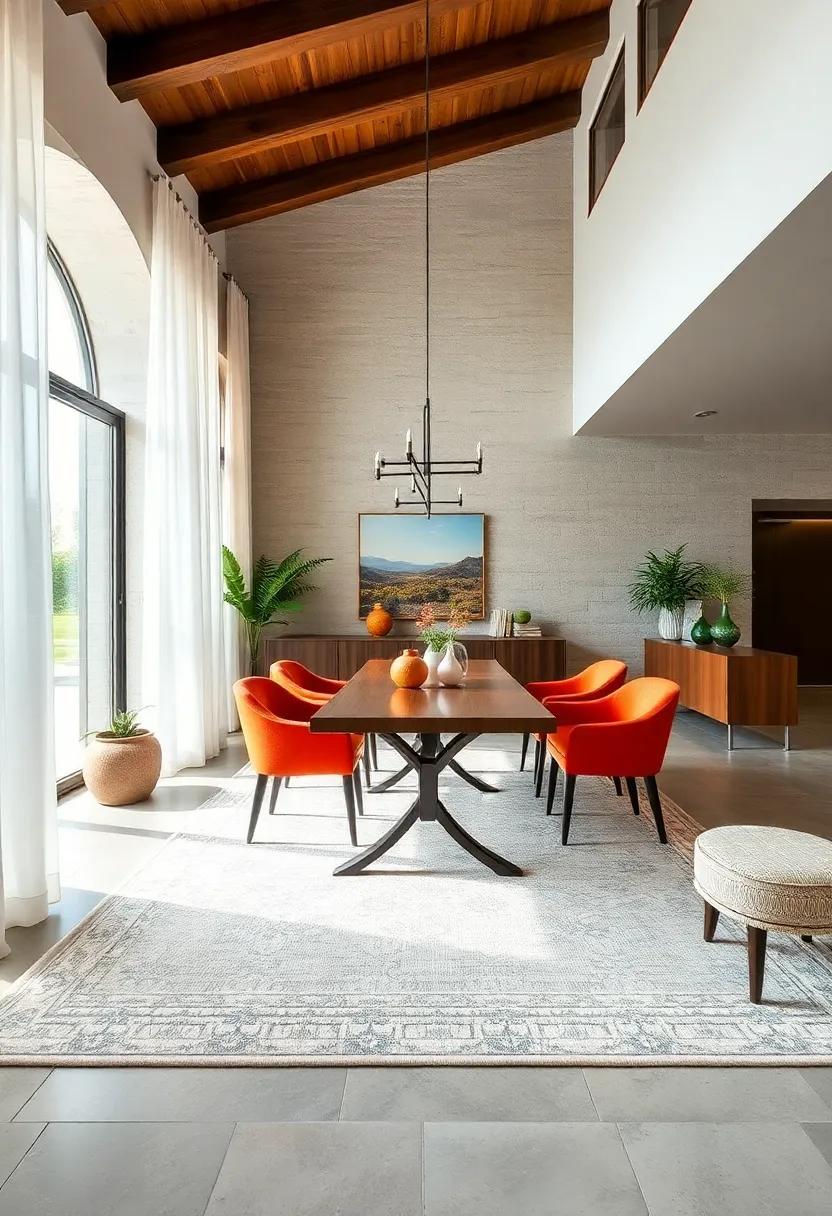
One of the smartest moves you can make when selecting a rug is to test samples in your own space. This simple step allows you to envision how different textures and colors interact with your dining area. Take a few samples home and lay them out in your room to see how they blend with your existing décor. Consider how various shades will look against your walls, your furniture, and even how they contrast with your dining table. Remember, the same rug can appear remarkably different in a showroom than it does in your home. With this in mind, look for these aspects:
- color Variations: Observe how the rug’s color shifts under natural daylight versus artificial lighting.
- Pattern Visibility: notice how intricate designs may be more pronounced in certain light settings.
- Texture Feel: Touch and feel the material to assess comfort and how it aligns with your dining experiences.
Don’t forget to consider the ambiance you want to create. For instance, a bold, vibrant rug can energize a space, while softer tones can promote serenity. To help you assess your options, utilize this simple table to weigh the pros and cons of each sampled rug in your space:
| Rug Sample | Color | Light Interaction | Feel |
|---|---|---|---|
| Sample 1 | Rich Blue | Bright under sunlight, subdued at night | Soft and plush |
| Sample 2 | Earthy Beige | Warm and inviting at all times | medium texture |
| Sample 3 | vibrant Red | Bold under daylights, muted indoors | Sturdy and durable |
Taking this simple yet effective approach will not only ease the decision-making process but also guarantee your chosen rug beautifully complements your dining area through all hours of the day.
Choose the right pile height: Low-pile rugs work well for dining areas,keeping chairs from snagging and making cleaning easier
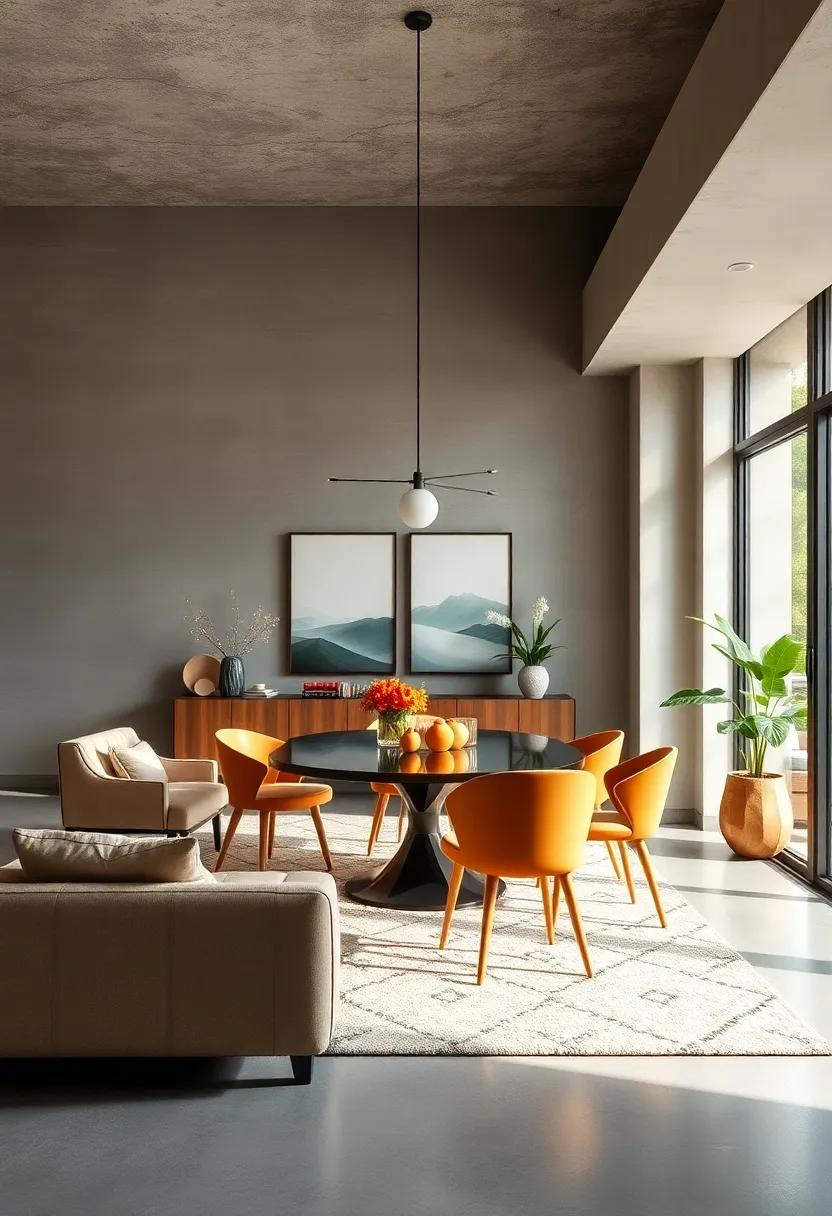
When selecting a rug for your dining area, consider opting for a low-pile design. These rugs are not only aesthetically pleasing, but they also serve a practical purpose. Low-pile rugs allow dining chairs to glide in and out with ease, preventing unsightly snagging that can damage both the chair and the rug. additionally, the flat surface of these rugs helps maintain a clean look even in high-traffic areas, making them an ideal choice for family gatherings and dinner parties.
Furthermore, low-pile rugs make cleaning a breeze. With minimal fibers to trap dirt and debris, they are easier to vacuum and require less maintenance compared to their thicker counterparts.This efficiency means you can spend more time enjoying meals with your family and friends rather than worrying about keeping your dining area spotless. To help visualize your options, here’s a simple comparison table of rug types:
| Rug Type | Pros | Cons |
|---|---|---|
| Low-Pile |
|
|
| High-Pile |
|
|
Mind the underlay: Don’t forget to use a rug pad for added cushioning, stability, and protection for your flooring
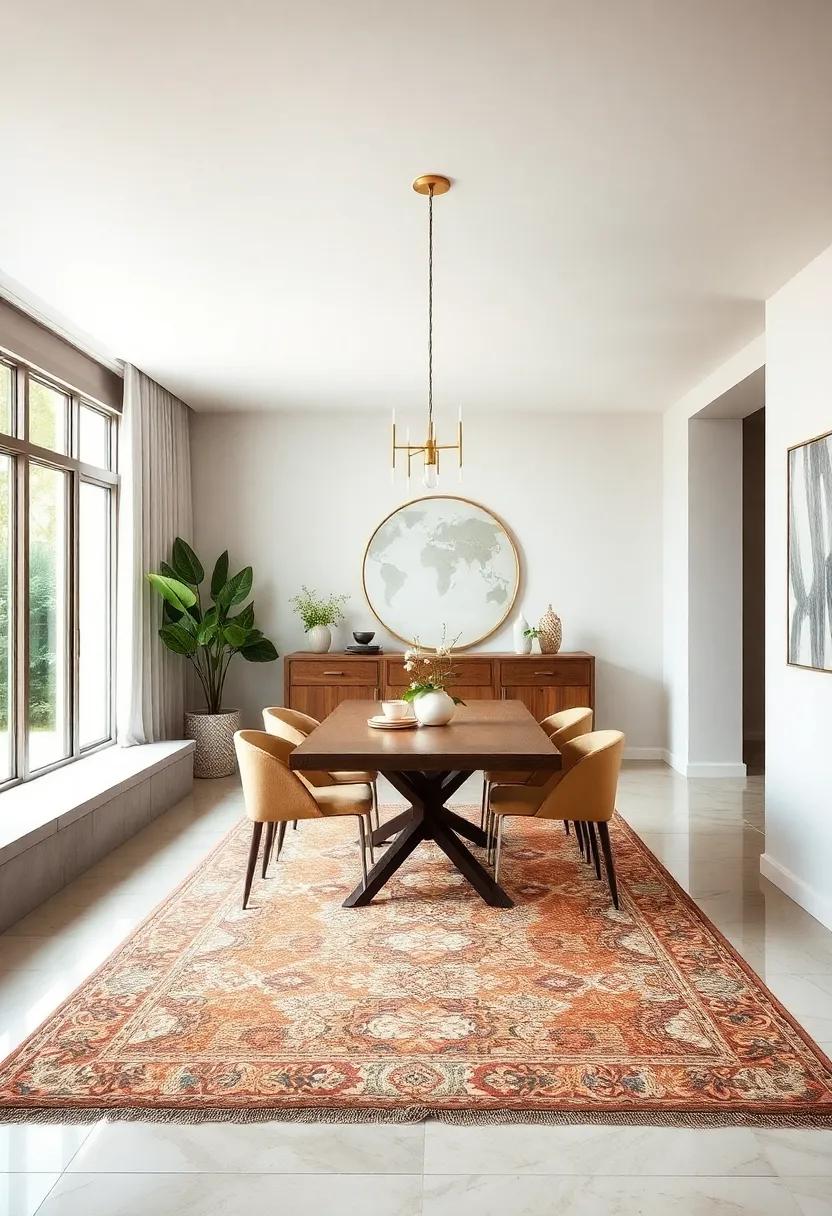
When you’re investing in a stunning rug for your dining area,it’s essential not to overlook the importance of a rug pad. This unassuming addition plays a vital role in enhancing your rug’s performance, providing benefits that go beyond just aesthetics.First and foremost,a rug pad offers added cushioning,making your dining experience more comfortable by softening the impact of footsteps and chair movements. In addition, it contributes to stability, preventing your rug from slipping and shifting during meal times, which can be especially crucial in homes with children or pets.
Beyond comfort and safety, a rug pad also acts as a protective barrier for your flooring. Whether you have hardwood, tile, or carpet, using a rug pad can help prevent scratches and damage, extending the life of your flooring. With a variety of materials available, you can choose a pad that suits your needs best—from felt for softness to rubber for grip. to illustrate the options available, here’s a simple comparison table to guide you in selecting the right pad:
| Material | Pros | Cons |
|---|---|---|
| Felt | Soft, adds cushioning, eco-kind | Less slip resistance |
| Rubber | Excellent grip, durability | Can leave residue on floors |
| Combination | Best of both worlds, balanced performance | May be more expensive |
Keep your style in mind: Align your rug choice with your overall interior design style, whether it’s modern, rustic, or traditional

Choosing a rug that complements your existing interior design style is essential for creating a cohesive look in your dining area. Whether your home embraces modern, rustic, or traditional aesthetics, the right rug can serve as a unifying element that enhances your overall decor. For modern spaces, consider minimalist designs with geometric patterns or solid colors that add a touch of sophistication without overwhelming the ambiance. In contrast, rustic styles may benefit from rugs crafted from natural fibers, featuring earthy tones and organic textures that evoke warmth and charm. Traditional interiors, on the other hand, often shine with richly patterned area rugs that incorporate intricate motifs and a palette of deep, classic colors.
When selecting a rug, it’s helpful to think about how the rug’s material, pattern, and color will interplay with existing elements in your dining area. Here are some ideas to keep in mind:
- modern: Opt for sleek, low-pile rugs with clean lines.
- Rustic: Choose handwoven or vintage-inspired options with rich texture.
- Traditional: Favor persian or Oriental rugs with ornate patterns.
You can also refer to the table below for a quick comparison of rug characteristics aligned with various design styles:
| Design Style | Rug Type | Key Features |
|---|---|---|
| Modern | Sleek, Low-Pile | Geometric Patterns, Solid Colors |
| Rustic | Handwoven, Natural Fibers | Earthy Tones, Texture |
| Traditional | Persian, Oriental | Ornate Patterns, Deep Colors |
Factor in the dining table finish: Reflect on how the rug interacts with the table material and color to maintain visual coherence
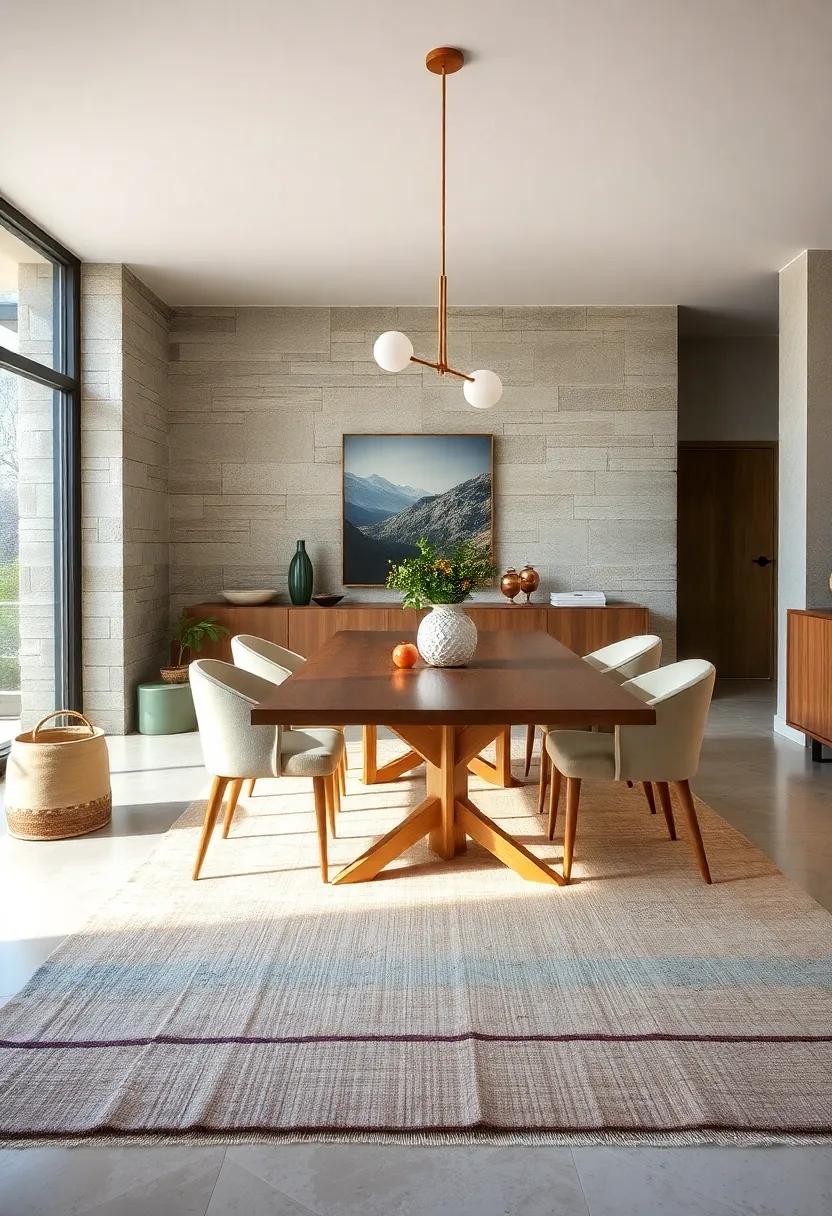
when selecting a rug for your dining area,it’s essential to consider how its design interacts with your dining table’s material and color. The finish of your table—whether it’s a glossy mahogany, rustic oak, or a sleek glass—will affect the overall harmony of the space.Contrast can create interest, but too much divergence may disrupt the flow. Selecting a rug that complements the wood tones or finish of your table can establish a cohesive look, allowing the two elements to enhance each other rather than compete for attention.Opt for hues and textures that echo your table’s finish, forging a connection that anchors the room.
Moreover, think about the style of your dining table when choosing a rug.As an example, if your table features modern lines and a minimalist aesthetic, a simple, geometric-patterned rug can underscore that sleekness. Conversely, a more ornate table could be beautifully balanced with an understated rug, allowing the craftsmanship of the table to shine without overwhelming the space.Consider these combinations:
| Table Material | Ideal Rug Style |
|---|---|
| Wood (Dark Finish) | Muted, neutral tones or soft textures |
| glass | Bold patterns or bright colors to add warmth |
| Metal | Industrial-rugged looks with earthy textures |
| Whitewashed Wood | Soft, faded colors for a cozy feel |
Ultimately, the key is to create a dialog between your table and rug, ensuring that each piece brings out the best in the other while maintaining visual coherence throughout the dining area.
Look for versatility: A timeless rug can transition well if you decide to re-decorate or change your dining area layout down the line
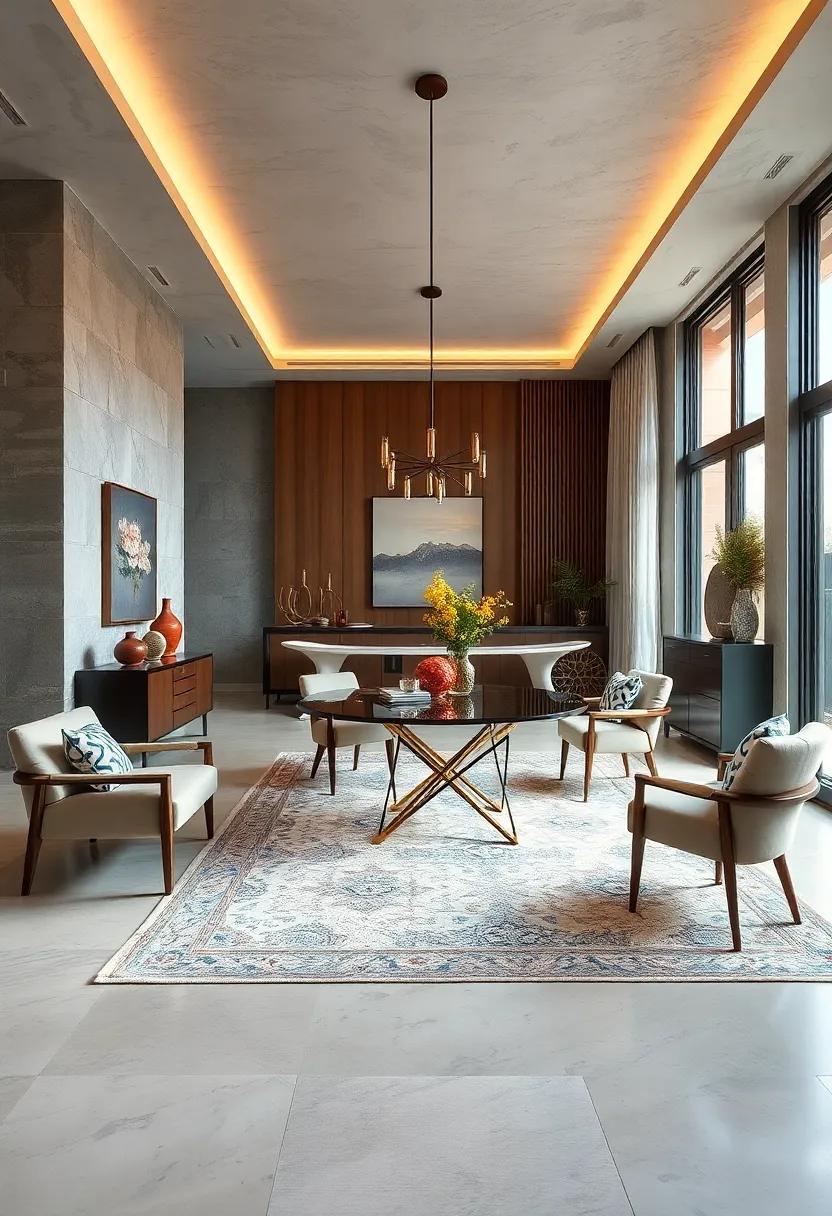
When selecting a rug for your dining area, opting for one that is versatile can save you from future styling headaches. A timeless rug can seamlessly adapt to a variety of decor styles, ensuring that it remains fashionable even as you refresh your space. Think about how the rug will interact with different color schemes, furniture styles, and layouts. Neutral colors and classic patterns are often the safest choices, as they can elegantly complement everything from minimalistic to eclectic settings.
Additionally, a flexible rug allows for effortless transitions when you decide to rearrange your dining area layout. Consider the following characteristics that enhance versatility:
- material: Choose durable fabrics like wool or synthetic blends that can withstand wear and tear.
- Size: A generously sized rug can anchor your dining table while also accommodating future changes.
- Pattern: Subtle patterns can add depth without overwhelming, making it easier to accessorize with different table settings.
Ultimately, the right rug should feel like a seamless part of your evolving home aesthetic, enhancing both the ambiance and functionality of your dining area for years to come.
Embrace contrast: if your dining area features neutral colors, consider a rug that introduces a vibrant, contrasting shade for a lively touch
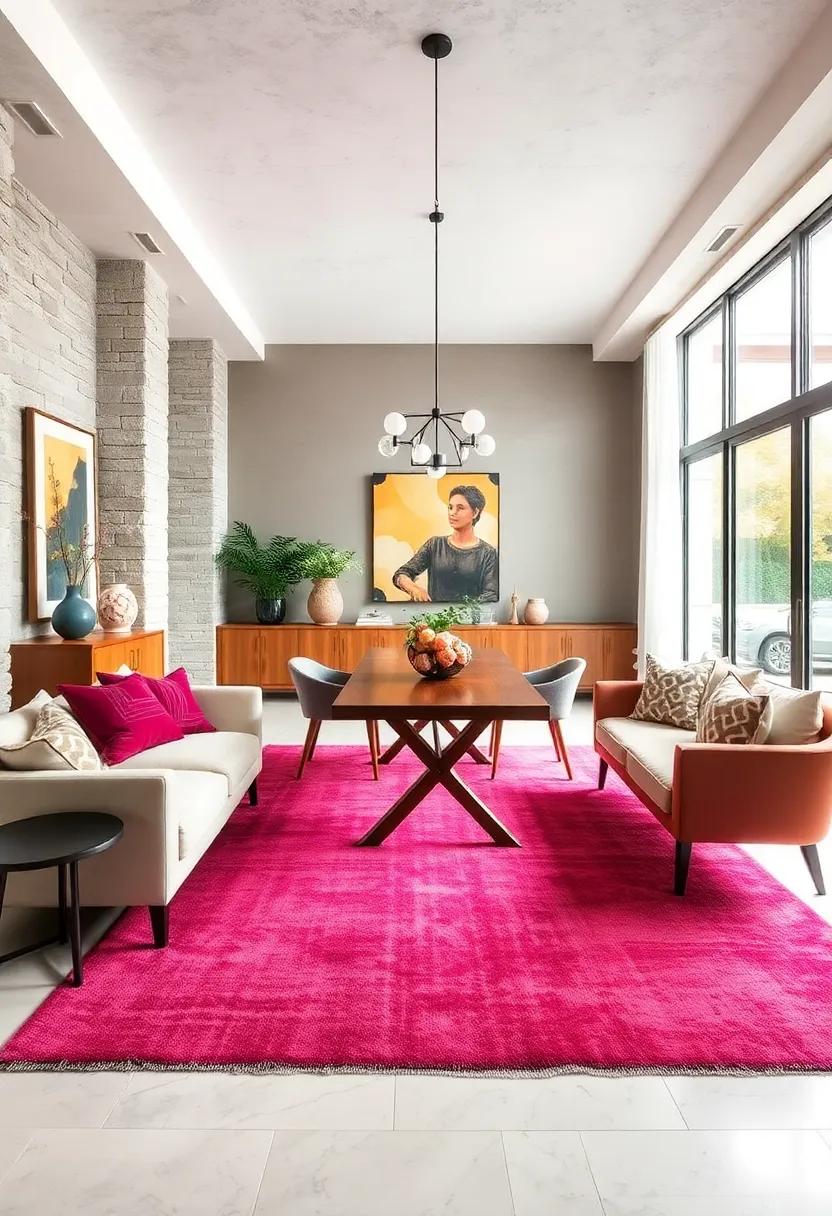
In an habitat dominated by soft earth tones or minimalist whites,a bold rug can act as a striking focal point that enhances the overall aesthetic of your dining area. Imagine stepping onto a lush area rug adorned with deep blues, fiery reds, or sunny yellows, instantly drawing the eye and uplifting the mood of the room. These vivid pops of color can serve not only to create visual interest but also to evoke emotion, encouraging vibrant conversations during meals and gatherings. Such contrasts not only break the monotony of a subdued palette but also invite warmth and character into your dining space.
When selecting a rug with contrasting shades, consider the following tips:
- Color wheel: use a color wheel to find complementary colors that will work harmoniously with existing decor.
- Pattern play: Incorporate patterns that feature your chosen vibrant shade, adding depth and texture while emphasizing the contrast.
- Size matters: A larger rug can envelop the dining area with color, while a smaller one can give a subtle touch without overwhelming the space.
Take inspiration from the table below, which showcases a few color combinations that could invigorate a neutral dining space:
| Neutral Base Color | Contrasting Rug Color | Suggested Pattern |
|---|---|---|
| Beige | Turquoise | Geometric shapes |
| Gray | Mustard Yellow | abstract modern |
| White | Coral | Floral design |
Consider the ambiance: The rug should contribute to the atmosphere you want to create, whether it’s calm and elegant or energetic and playful
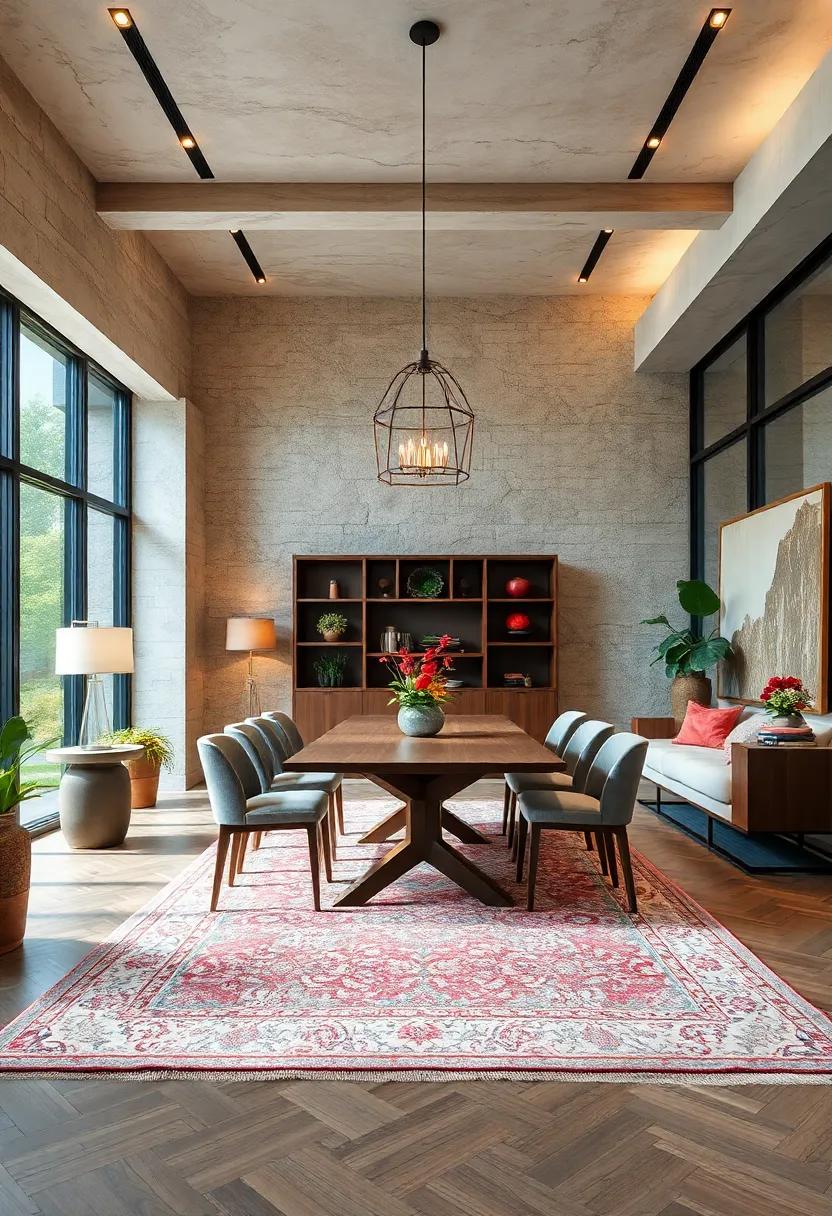
When selecting a rug for your dining area, it’s essential to think about how its design and texture will complement the overall feel of the space. A calm and elegant atmosphere can be achieved with muted colors and refined patterns. Consider soft,natural fibers such as wool or jute in neutral shades like beige,soft grey,or gentle pastels. These choices will not only add warmth but also enhance the sophistication of your dining setup. Additionally, textures like a plush pile can evoke a sense of comfort, inviting guests to linger around the table longer.
On the other hand, if you’re looking to create a more energetic and playful vibe, opt for vibrant colors or bold geometric patterns that can spice up the decor. A contemporary design with splashes of bright hues or whimsical motifs can inject personality into the room, making it feel lively and welcoming. Think about playful materials like flat-weave or indoor/outdoor rugs that can withstand spills while still adding an element of fun to your dining experience. Below is a simple table comparing both styles for easier visualization:
| style | Characteristics | Recommended Materials |
|---|---|---|
| Calm & elegant | Muted colors, refined patterns, sophisticated feel | Wool, jute, cotton |
| energetic & Playful | Vibrant colors, bold designs, lively atmosphere | Flat-weave, synthetic, indoor/outdoor materials |
Inspect rug construction: Choose rugs with quality construction to ensure longevity and withstand the test of time
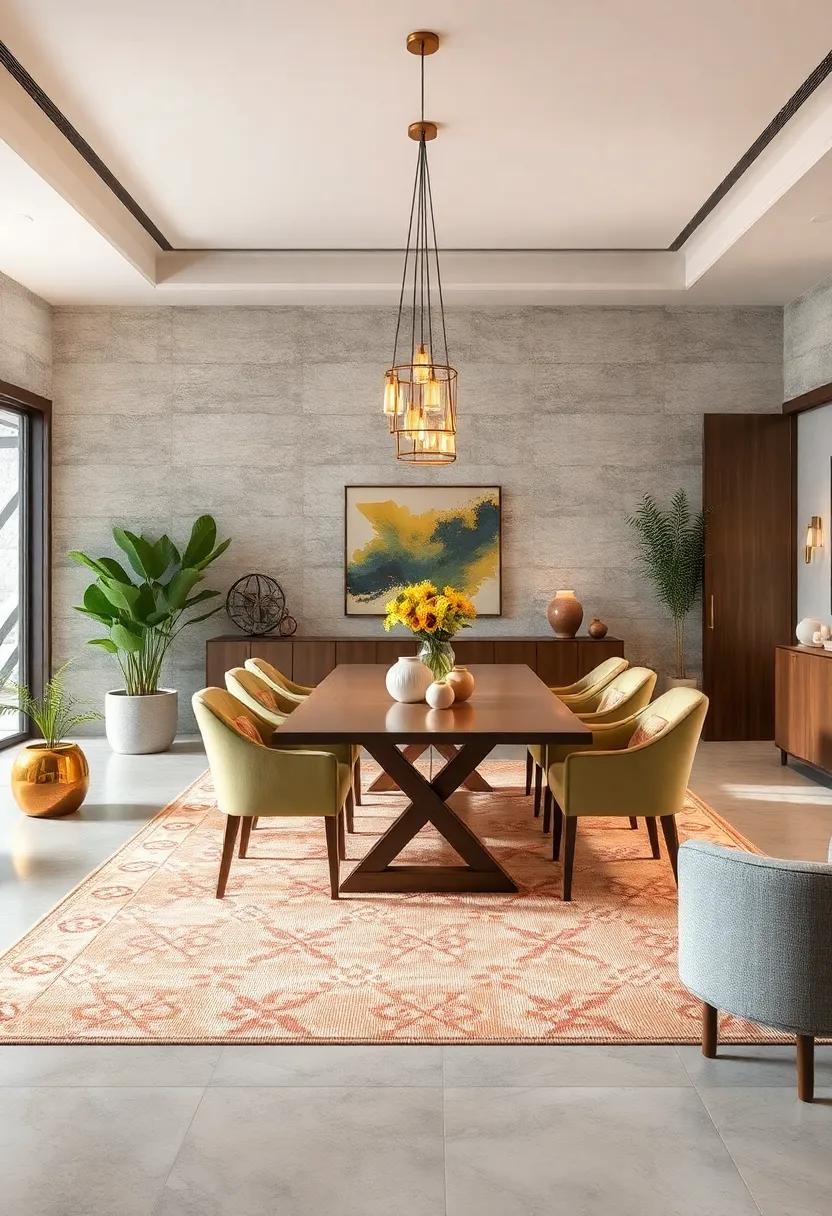
When selecting a rug for your dining area, paying attention to its construction can significantly impact both the aesthetic and durability of your choice. Rugs come in a variety of constructions,from hand-knotted to machine-made,and understanding these can help you make a more informed decision.Look for features such as:
- Material quality: Natural fibers like wool and silk tend to offer better durability and longevity compared to synthetic options.
- Weave density: A tightly woven rug usually indicates higher quality and greater resilience, making it well-suited for high-traffic areas.
- Edge finishing: Inspect the edges for secure finishing techniques like serging or binding, which can prevent fraying and enhance the rug’s lifespan.
- Backing type: Rugs with a non-slip backing will reduce movement and help maintain their shape over time.
Additionally, consider the specific type of construction that best fits your lifestyle. For instance, if you have young children or pets, you might prefer a low-pile cut or a flatweave design, which are easier to clean and maintain. Here’s a quick comparison of various constructions:
| Rug Type | Key Feature | Durability |
|---|---|---|
| Hand-knotted | Artisan craftsmanship | High |
| Hand-tufted | Textured surface | Medium |
| Machine-made | Even patterns | Varies |
| Flatweave | Reversible | High |
Be mindful of edge finishes: Surged or fringed edges can impact both durability and the overall look,so choose based on your style preference
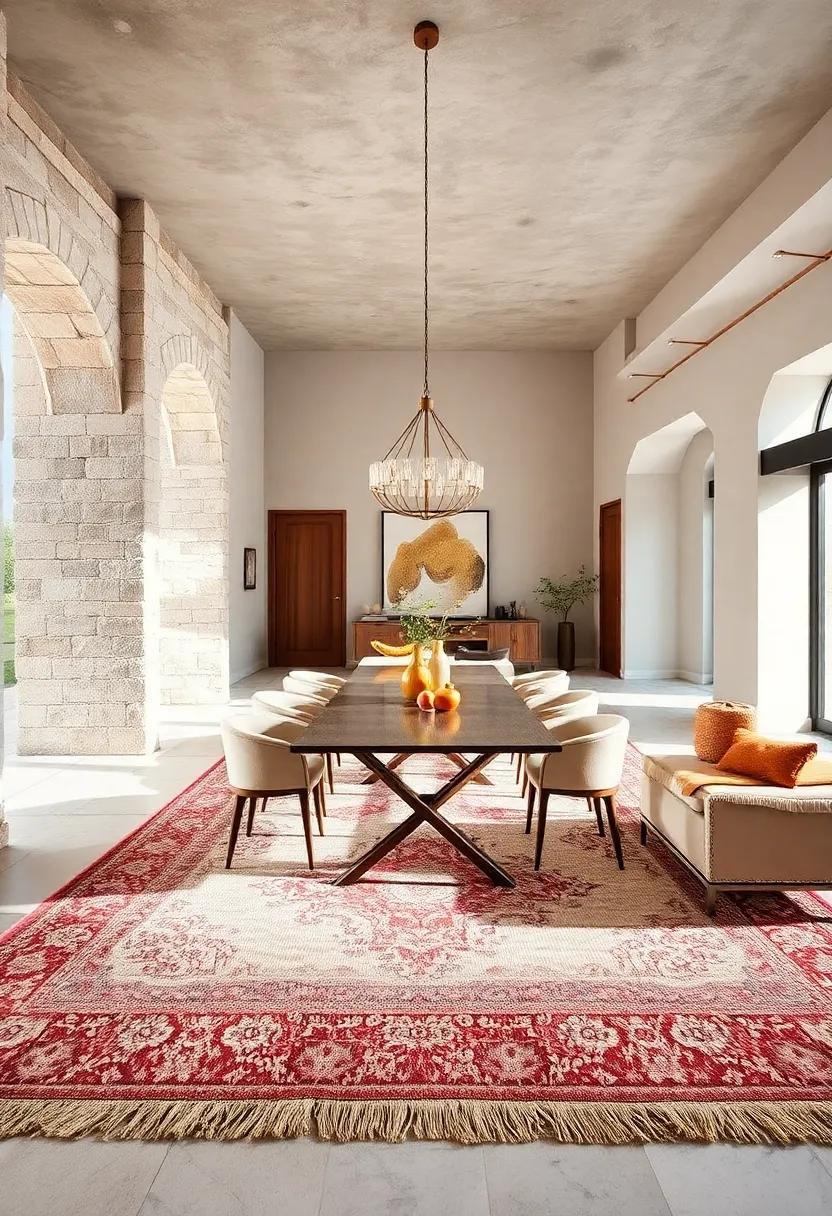
When selecting a rug, the edges play a crucial role in both aesthetics and longevity. Surged edges, typically stitched tightly with a smooth finish, offer a refined look that can complement sleek and modern dining areas. This style not only enhances the durability of the rug but also protects it from fraying over time. On the flip side,fringed edges contribute an element of bohemian charm and can soften the overall feel of the room. they invoke a sense of casual elegance but may require more maintenance, as the threads can unravel and wear down with high foot traffic.
Your choice between these finishes should align with your personal style and the functionality you need. Consider the following factors when making your decision:
- Room Style: Modern vs. Traditional
- Usage: Casual dining vs. Formal occasions
- Care Requirements: Easy upkeep vs. Delicate maintenance
Ultimately, a carefully chosen edge finish can elevate your dining space’s visual appeal while ensuring your rug withstands the test of time. Choose wisely to create the perfect atmosphere for meals, gatherings, and lasting memories.
Keep it practical: Ensure that the rug will not pose tripping hazards, especially in high-traffic areas around the dining table

When selecting a rug for your dining area, it’s essential to prioritize safety alongside style. Rugs should enhance your space without compromising functionality. Focus on non-slip materials or those that come equipped with a backing designed to minimize movement. Additionally, consider opting for a rug with a flat weave, which is less likely to create a tripping hazard compared to thicker, plush options. Always take measurements of the area around your dining table to ensure that the rug’s dimensions allow for comfortable movement without excessive overlap at the edges.
In high-traffic zones such as dining areas, it’s wise to think about durability and maintenance. Look for rugs that are made from stain-resistant fabrics and are easy to clean—this not only enhances safety but also prolongs the rug’s lifespan. Consider placing heavier furniture, like dining chairs, on the edges of the rug to keep it in place and reduce the chances of slipping. Lastly, avoid using rugs with long fringe or excessive embellishments, as these can catch on shoes and lead to accidents.
Explore outdoor options: If your dining area is outside, look for rugs specifically designed to withstand outdoor conditions
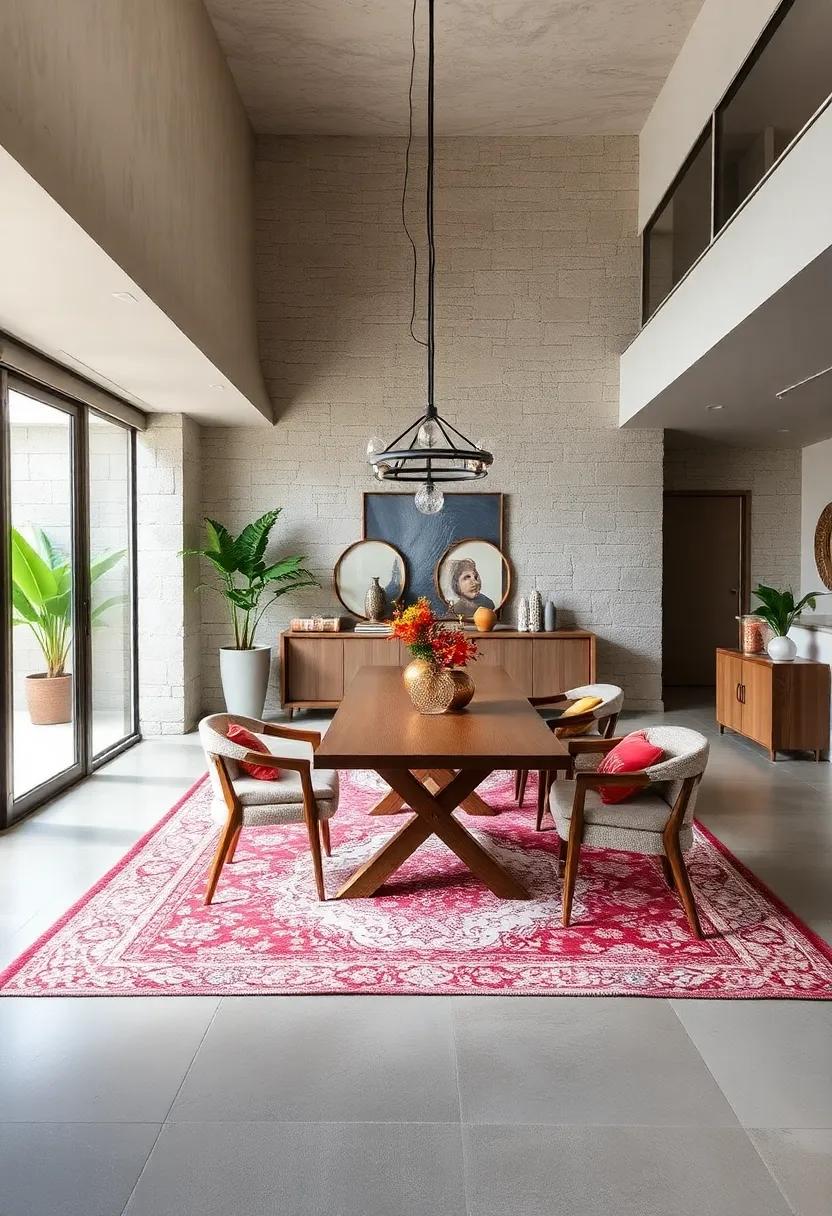
When transforming your outdoor dining space into an inviting oasis, choosing the right rug is crucial for both functionality and aesthetics. Look for options made from durable materials like polypropylene, recycled plastic, or acrylic, which are specifically engineered to resist fading from UV rays, moisture, and mildew. These materials not only stand up to variable weather conditions but also provide a soft,comfortable surface underfoot,enhancing the overall dining experience.
To ensure you select a rug that harmonizes with your outdoor design, consider these essential features:
- Water Resistance: Opt for rugs with water-repellent properties to prevent mold and mildew.
- Easy to Clean: Look for rugs that can be easily hosed down or spot cleaned to maintain their appearance.
- Flatweave Designs: Choose flatweave options that stay put and reduce trip hazards while allowing rainwater to drain easily.
Additionally, it’s helpful to consult a guide to color and pattern choices, ensuring they complement your outdoor decor.
| Material | Benefits |
|---|---|
| Polypropylene | Lightweight, UV resistant, and quick drying. |
| Recycled Plastic | Eco-friendly, durable, and easy to maintain. |
| acrylic | Soft texture, vibrant colors, and resistant to fading. |
Reflect on seasonal changes: Consider how the rug will look throughout different seasons, and choose colors and patterns that remain appealing year-round
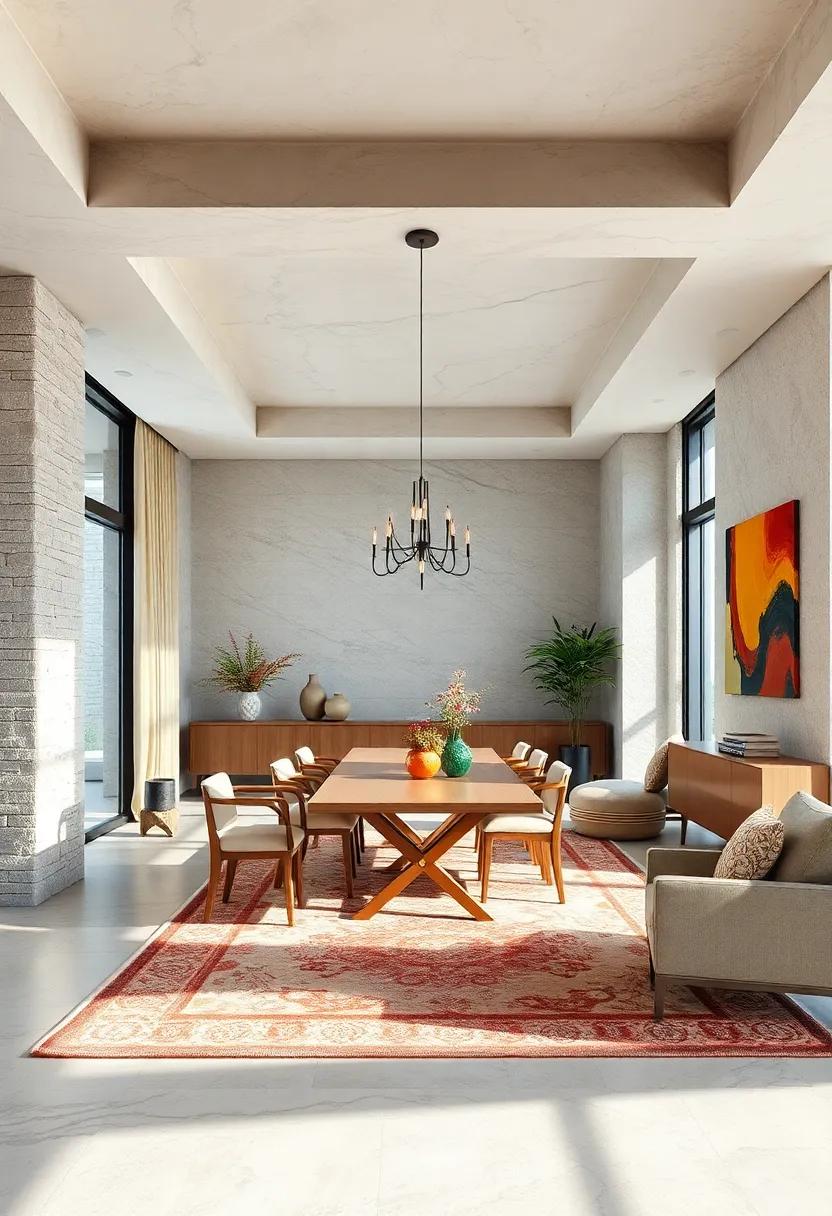
When selecting a rug for your dining area, it’s essential to envision how it will transform with the seasons, enhancing the ambiance of your space year-round. Summer calls for vibrant hues that evoke warmth, whereas fall invites rich, earthy tones that mirror the changing leaves. In winter,deeper colors can create a cozy atmosphere,while spring may inspire lighter shades and floral patterns. Think about colors that transition smoothly from season to season, such as:
- Warm neutrals like beige or taupe that are versatile enough to suit any season.
- Deep jewel tones for a sophisticated touch that pairs well with seasonal décor.
- Subtle patterns that include hints of seasonal colors without being overly bold.
Consider the texture and material of your rug, as certain fabrics can evoke different feelings throughout the year. For example, a plush, thick rug might feel inviting during the colder months, while a flatweave or natural fiber rug can keep things light and breezy in warmer weather.You can look at the following factors before making your decision:
| Factor | Ideal for summer | Ideal for Winter |
|---|---|---|
| Color | Light pastels, Tropical prints | Deep burgundy, Forest greens |
| Material | Cotton, Jute | Wool, Velvet |
| Pattern | Floral, Geometric | Damask, Medallion |
Stay in budget: Set a budget beforehand, and explore options within that range to avoid overspending on your perfect rug
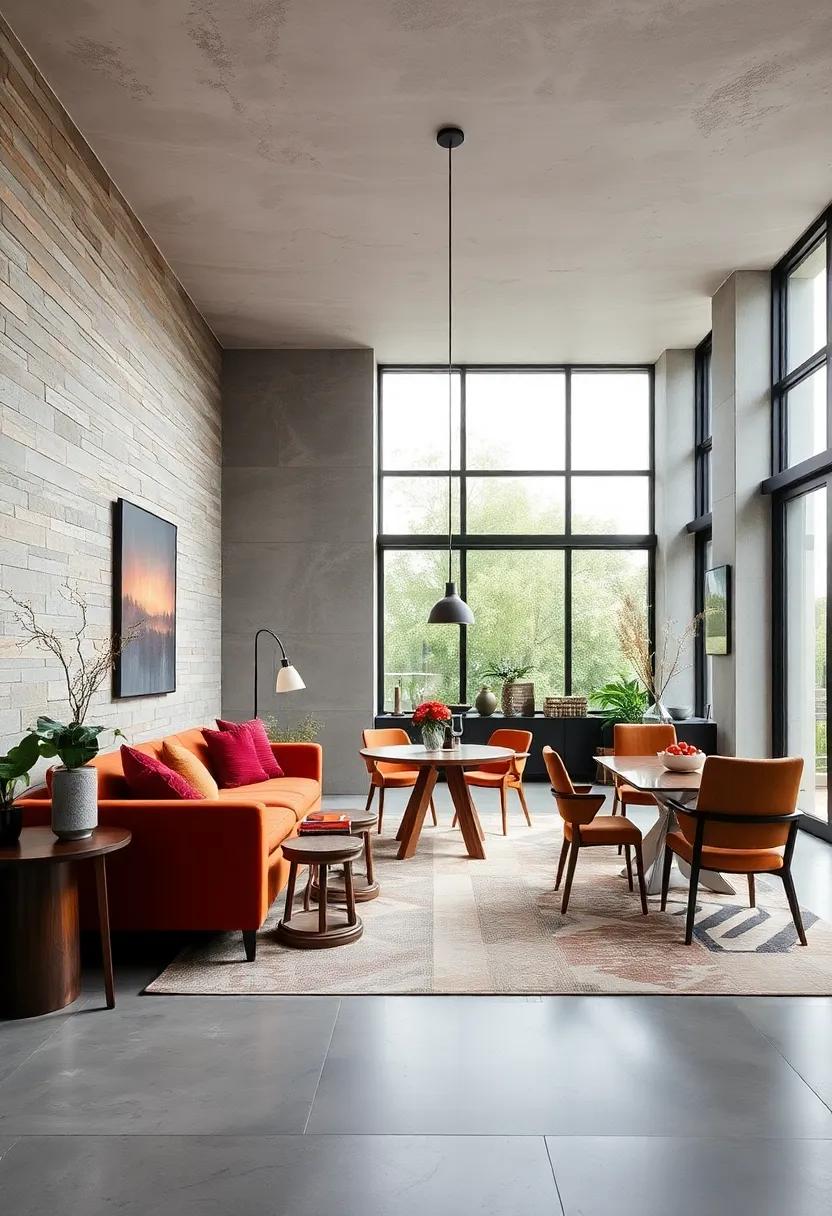
Finding the right rug at the right price can be an exhilarating yet daunting task. To streamline your search and ensure you remain within your financial comfort zone, start by clearly defining your budget. Consider the following tips for maintaining that fiscal focus:
- Research Average Prices: Investigate the market value of rugs that fit your desired style. This knowledge will empower you to make informed choices without falling prey to impulse buying.
- Set a Maximum Limit: Determine a cap on your spending to prevent yourself from being lured into overspending due to emotional connection or beautiful designs.
- Explore Different Vendors: Don’t limit your search to just one store or online site. Browse various retailers, including discount sites and local shops, to find the best deals within your budget.
One effective method to avoid exceeding your budget is to create a simple comparison table of your options. This will not only help you visually assess which rugs fall within your price range but also allow room for other factors such as size and material. Here’s a sample of what that could look like:
| Rug Type | Price | Size | Store |
|---|---|---|---|
| Wool Area Rug | $150 | 5×7 ft | HomeGoods |
| Jute Rug | $80 | 4×6 ft | IKEA |
| Patterned Synthetic Rug | $120 | 6×9 ft | Wayfair |
This approach grants you a clear perspective on what fits your financial parameters while still allowing you to select a rug that complements your dining aesthetic beautifully.
Ask for recommendations: Get feedback from friends or family about their rug choices and experiences to spark new ideas
When it comes to selecting the right rug for your dining area, sometimes the best inspiration comes from the experiences of those closest to you. Reach out to friends and family who have recently redesigned their spaces or purchased new rugs. Ask them about their choices and what factors influenced their decisions.Often, they can share invaluable insights that will help you narrow down your options. Consider posing questions like:
- What style did you choose and why?
- How has the rug held up over time?
- Did you choose natural fibers or synthetic materials?
- How does it complement your dining furniture?
- Any tips on maintenance or cleaning?
Gathering these recommendations not only exposes you to a variety of styles but also gives you a sense of the practical aspects of living with a rug. It’s a great way to spark ideas and examine options you might not have considered, such as texture, color schemes, or even sizing. You could also create a simple table to compare what worked and what didn’t for your friends and family:
| Friend/Family member | Rug Style | Material | Durability Rating |
|---|---|---|---|
| Jane D. | Vintage Persian | Wool | ★★★★☆ |
| Mike S. | Modern geometric | Polyester | ★★★☆☆ |
| Lisa R. | Natural Jute | Jute | ★★★★★ |
Visit local stores: Nothing beats the experience of seeing, feeling, and testing rugs in person before making a purchase
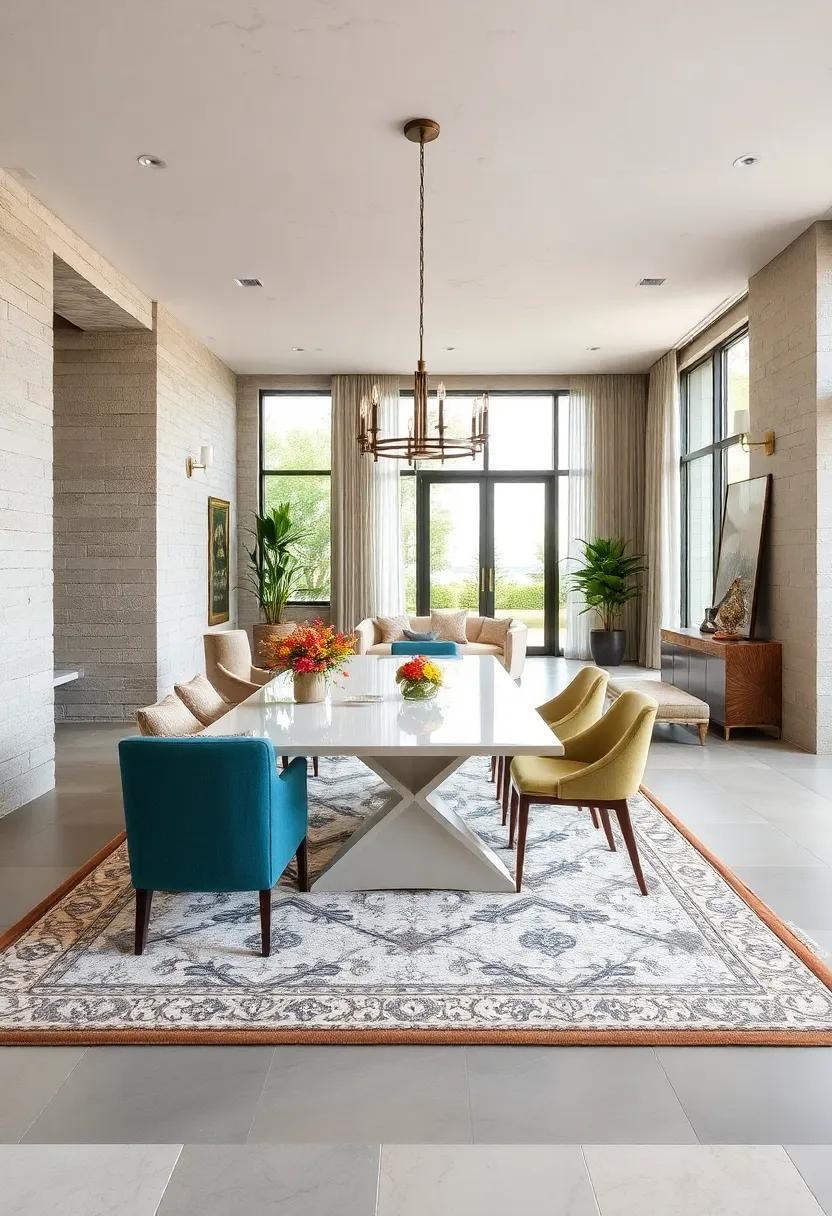
Exploring local stores offers an unparalleled opportunity to immerse yourself in the world of rugs. When you visit a shop, you can see the true colors and textures, which can be misrepresented online.Touching the materials allows you to gauge their quality and softness,factors that are crucial for your dining area. You can also test the size by laying the rugs out in-store or envisioning how they’d look in your space. This tactile experience answers questions that images alone simply can’t address, such as how a rug feels underfoot or how it complements your existing décor.
Moreover, engaging with educated staff can enrich your shopping experience.They can share insights on care tips, durability, and even past context behind certain designs that you might find interesting.If available, look for local artisans who may sell unique, handmade rugs. They not only bring character to your dining room but support your community. As you explore, keep a mental or physical list of options that catch your eye, or even a notebook filled with notes and sketches to help you visualize your perfect match at home.
Trust your instincts: Ultimately, choose a rug that resonates with you and feels right for your dining space, as it will become a vital part of your home
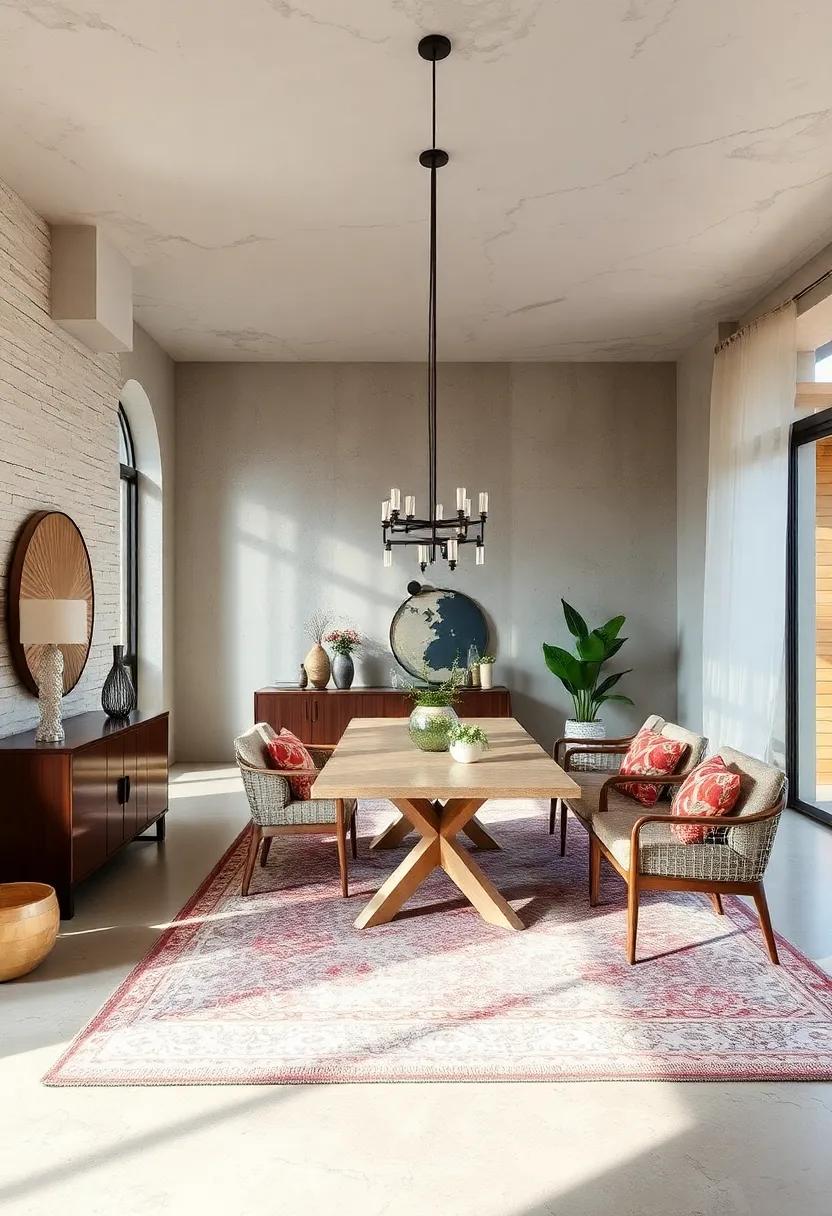
When it comes to selecting the perfect rug for your dining area, intuition plays a crucial role. Trust your personal taste and allow your instincts to guide you in making a choice that resonates with your aesthetic. Consider what draws you to a particular design—this could be the vibrant colors, intricate patterns, or even the texture. A rug should not just complement your dining space; it should evoke a sense of warmth and comfort that encourages gatherings and memorable meals. It’s essential to visualize how the rug will interact with the existing decor and ambiance. Think about how it feels when you envision it in the room, as this intuition is often an unexplainable yet powerful indicator of what will work best for you.
Moreover, factor in the emotional connection you have with a rug. Select a piece that tells a story or reflects your personality, whether it’s a handwoven masterpiece from your travels or a modern geometric design that symbolizes your contemporary vibe. Rugs are not just functional items; they are art pieces that can transform a space and bring life to your dining area. Take your time browsing, and don’t hesitate to seek out options that make your heart skip a beat. Sometimes, following your heart can lead to the most unexpected yet perfect choices.a rug that feels right will naturally enhance the overall aesthetic of your dining space, serving as a lasting element of your home.
In Conclusion
As you embark on your journey to transform your dining area with the perfect rug, remember that each step you take in this process is an opportunity to express your personal style and enhance your home’s atmosphere. The tips provided offer a compass to guide you through the myriad of choices, ensuring you select a rug that not only complements your space but also resonates with your unique vision.
Whether you’re aiming for a cozy, welcoming vibe or a sleek, modern aesthetic, the ideal rug has the power to tie your dining room together, making it both functional and inviting for gatherings with family and friends.
Now that you’re equipped with these essential tips, trust your instincts, explore different textures and patterns, and most importantly, have fun along the way! Your perfect rug awaits—go ahead and let it be the centerpiece that elevates your dining experience to new heights. Happy decorating!


